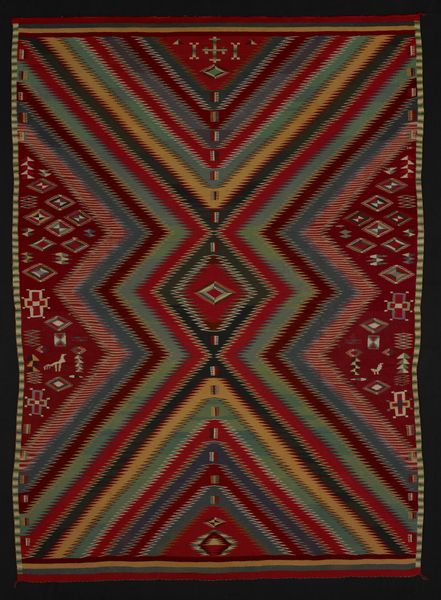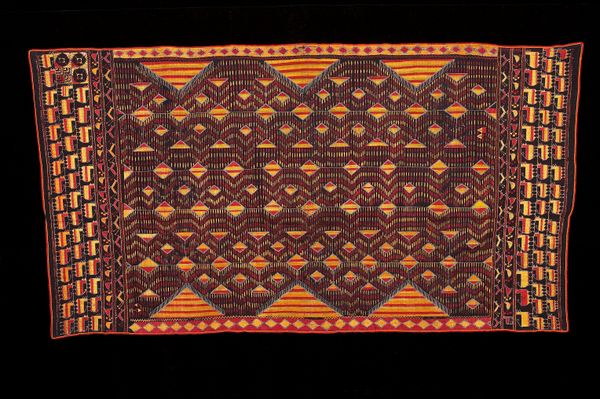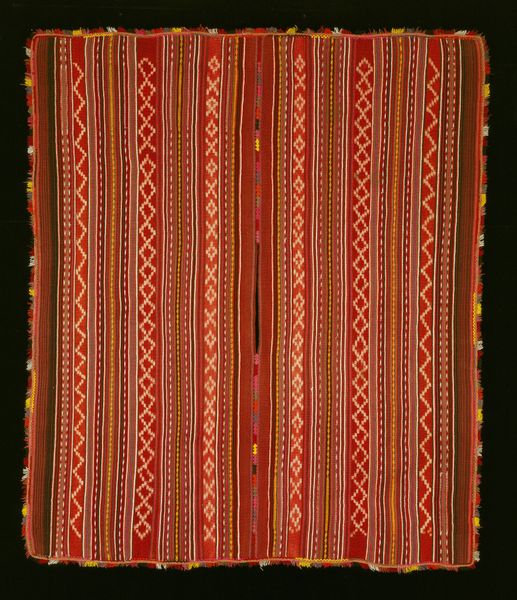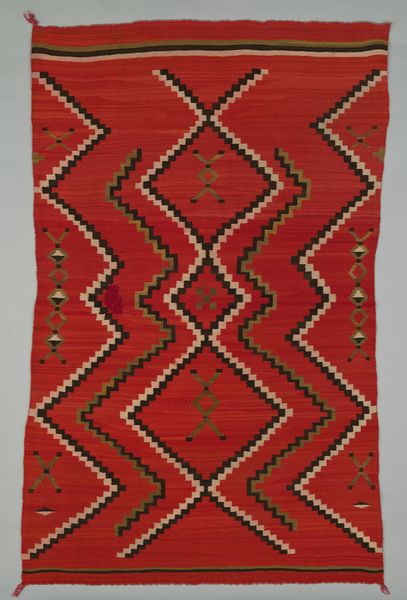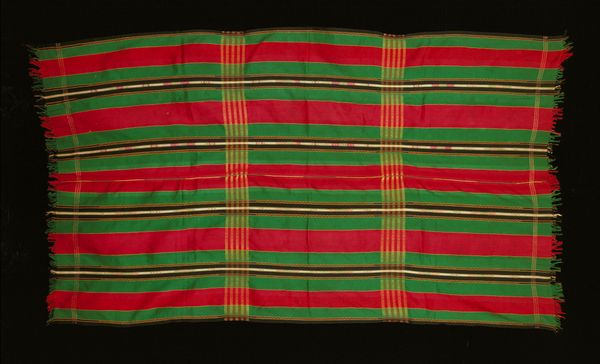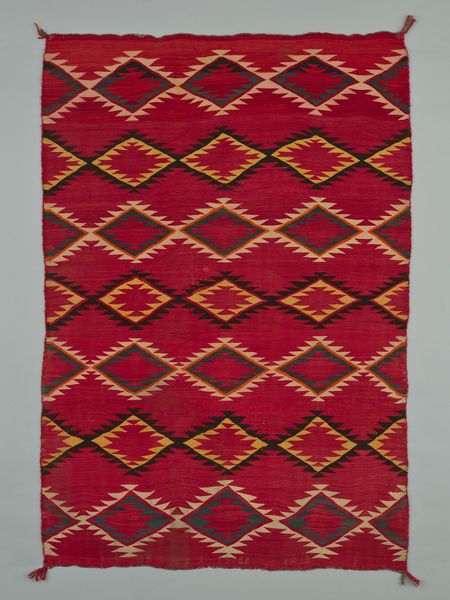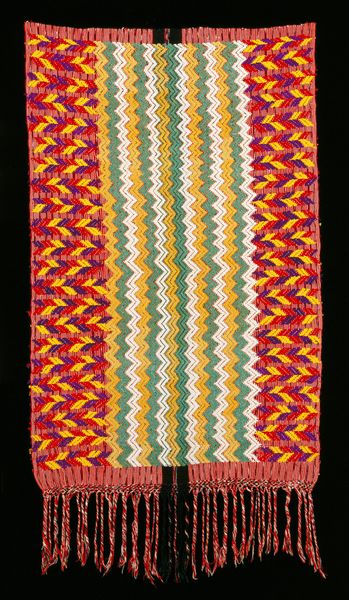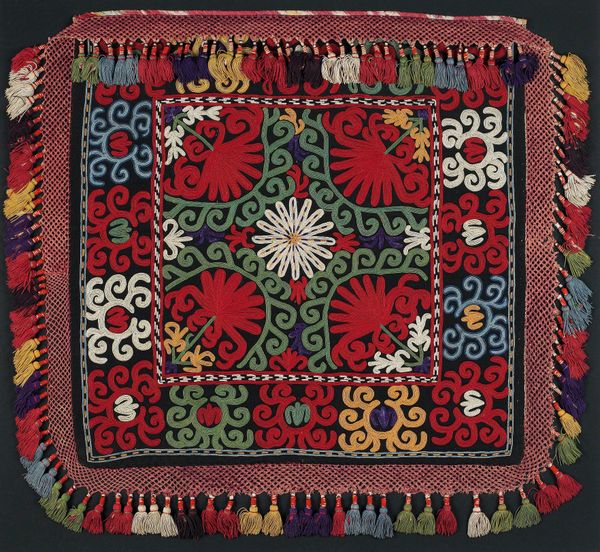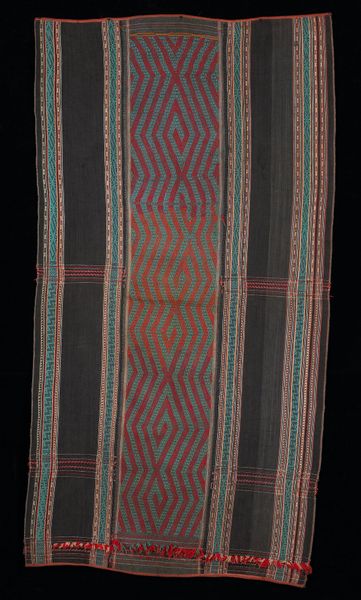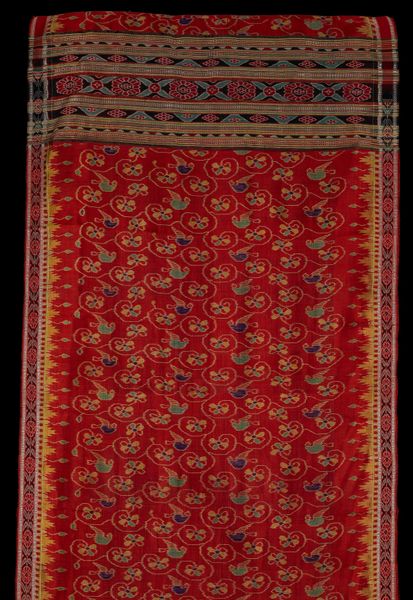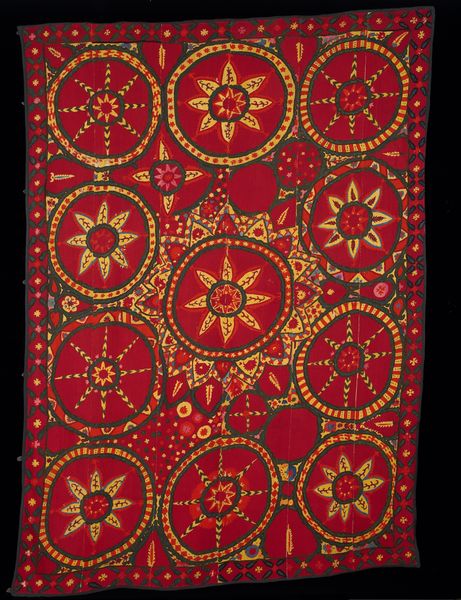
fibre-art, silk, weaving, textile
#
fibre-art
#
silk
#
weaving
#
textile
#
orientalism
#
islamic-art
Dimensions: 60 x 52 in. (152.4 x 132.08 cm)
Copyright: Public Domain
Curator: Let's take a closer look at this "Headcloth," crafted around 1920. It’s part of the Minneapolis Institute of Art’s collection. A striking example of silk fibre art, specifically through weaving and textile techniques. Editor: My first impression? A vibrant explosion! The dynamic, almost chaotic patterns against the deep colors create a sense of energetic movement. Curator: Exactly. The choice of silk as a primary material lends itself well to that dynamism. The process of creating ikat involves resist dyeing threads before weaving, requiring skilled artisans to plan how colors align when woven together. This labour should also be recognized as part of the overall artwork Editor: I am immediately drawn to consider not only the visual aesthetics, but what meanings and contexts have become interwoven within. The historical use of headcloths within Islamic art often signals respectability, honor, and even sometimes cultural resistance during periods of colonial domination or social upheaval. Curator: Precisely. Consider also the physical making. The labor of the silk production itself involves various processes. Sericulture is incredibly demanding and, the means to process the raw materials and produce the cloth could vary greatly depending on whether it was done in large workshops or rural homes. Editor: This brings an important dimension. Because in certain cultures the headcloth is both a utilitarian and highly symbolic element. Gender, religion, and socio-economic status are all signaled through it and often determine its design, color, and material composition. So in effect, by examining the "Headcloth", we engage in decoding narratives of cultural significance. Curator: And from my perspective, examining these fabrics also encourages us to reconsider our own understanding of "craft". Perhaps viewing works such as this headcloth, not merely through their surface but as manifestations of complex industrial process, allows us to overcome historical bias regarding textiles. Editor: This resonates profoundly; we gain a glimpse of identity construction, communal traditions, and quite frankly a defiant assertion against erasure from history books. In an epoch where so much emphasis is placed upon monumental artistic acts we are instead grounded through intimacy by its ability to traverse socio-political planes. Curator: Absolutely. Focusing upon materials grants a new way for interpretation that goes well beyond purely aesthetic enjoyment but offers tangible perspectives on our history and societal processes surrounding how such works took shape originally. Editor: What a beautifully provocative fusion; indeed something quite moving emerges from linking its material properties along with resonant symbolism which elevates what seems initially simple onto becoming richly multilayered with meaning for all.
Comments
No comments
Be the first to comment and join the conversation on the ultimate creative platform.
